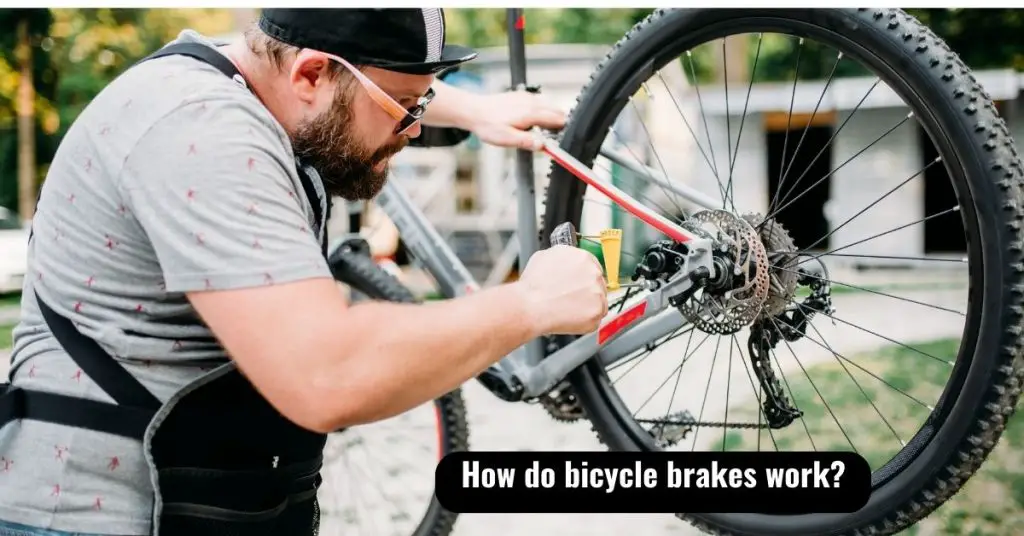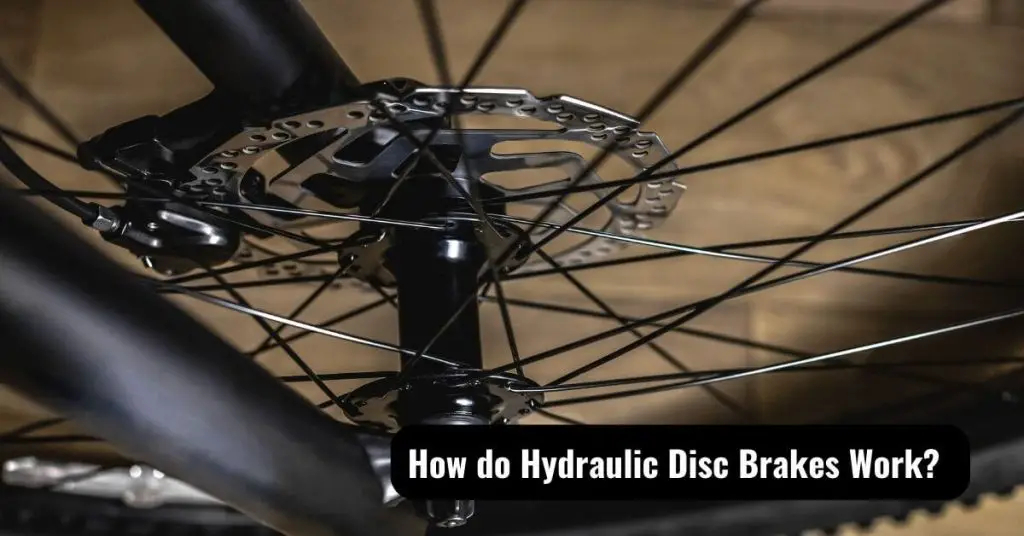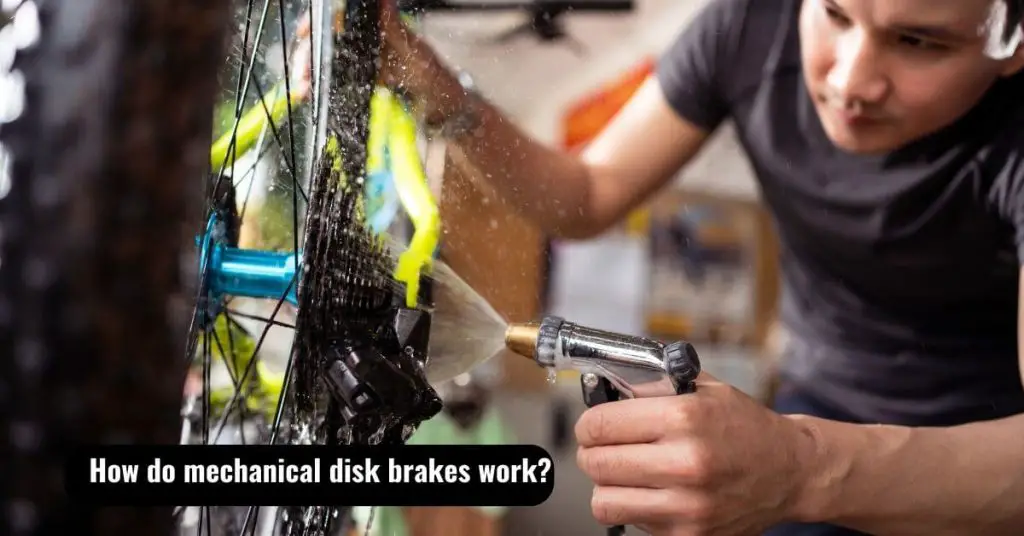How Do Bike Brakes Work: Learn The Science Behind It
Bike brakes are a crucial component of any bicycle; providing the ability to slow down or stop safely and understanding how bike brakes work can help riders appreciate the science behind this essential mechanism. Bike brakes operate on the principle of friction, utilizing various mechanisms to convert the energy of motion into heat, ultimately reducing the speed or bringing the bike to a halt.
Whether riding a road bike, mountain bike, or any other type of bicycle, the braking system is designed to ensure control and safety. In this guide, we will explore the science behind bike brakes, covering the different types of brakes and their working principles. By gaining insight into how bike brakes function, riders can better appreciate their importance and make informed decisions regarding maintaining and upgrading their braking systems.
Types of bicycle brakes
| Type of Bicycle Brake | Description |
|---|---|
| Rim Brake (Caliper Brake) | Caliper brakes, also known as rim brakes, use friction pads that press against the sides of the rim to slow down or stop the bike. They are commonly found on road bikes and older models of bicycles. |
| Rim Brake (V-Brake) | V-brakes, also called linear-pull brakes, are a type of rim brake that uses a pair of arms with brake pads that squeeze against the sides of the rim. They are commonly used on mountain bikes and some hybrid bikes. |
| Disc Brake | V-brakes, also called linear-pull brakes, are rim brakes that use a pair of arms with brake pads that squeeze against the sides of the rim. They are commonly used on mountain bikes and some hybrid bikes. |
| Drum Brake | Drum brakes consist of a brake drum attached to the wheel hub and internal brake shoes that press against the drum to create friction. They are less common on bicycles and often found on cruiser bikes or older models. |
| Coaster Brake | Coaster brakes, also known as backpedal brakes, are commonly found on children’s bikes and some cruiser bikes. The braking mechanism is located inside the rear hub and engages when the rider pedals backward. |
| Hydraulic Rim Brake | Hydraulic rim brakes, like hydraulic disc brakes, use fluid to transfer force from the brake lever to the brake pads. They provide powerful and consistent braking performance and are commonly used on high-end road bikes. |
| Hydraulic Disc Brake | Hydraulic disc brakes use hydraulic fluid to transmit force from the brake lever to the brake calipers, resulting in reliable and powerful braking. They are prevalent on mountain bikes and many modern road bikes. |
How do bicycle brakes work?

Bicycle brakes most commonly use a so-called cantilever brake. It consists of two brake levers on either side of the front fork. These levers compress the brake pads when you pull one lever and release the other.
Most cantilever brakes also have a mechanism to adjust the braking force applied to the wheels. These mechanisms usually move the brake pad closer or further away from the rim.
V-Brakes
Some newer bikes have a braking system known as V-brakes. With V-brakes, two brake arms compress the brake pads. One arm is near the wheel’s outside edge, while the second arm is near the inside edge. The arms are connected to a pivot in the center of the frame. V-brakes are sometimes called “cross brakes” because the arms cross over each other.
If you want to stop quickly, push the lever down. Then you can easily take your foot off the pedal without worrying about accidentally releasing the brakes. V-brakes are found on high-end mountain bikes and road bikes. However, they are not common on road bikes.
When using V-brakes, push down on the lever to open the arms. The brake pads are pulled away from the rim when the arms open, the arms close again when you release the lever, and the brake pads are pressed against the rim.
Disk brakes
A disc brake is similar to a V-brake, except it has one large disk attached to the axle instead of two arms. When applying the brake lever, the disk spins and applies pressure to the brake pads, and disk brakes are usually much stronger than cantilever brakes.
Because they create more friction between the brake pads and the rim, they provide better-stopping power than cantilever brakes. However, they require more maintenance than cantilever brakes, especially if you ride in wet conditions.
Disk brakes are most common on mountain bikes and BMX bikes. They are less common on road bikes. A simple look at the function and maintenance of your bike’s disk brakes
Bicycle brakes include caliper brakes (cantilever brakes), V-brakes, and disk brakes. Caliper brakes are found on road and mountain bikes, while V-brakes are often on hybrid bikes. Disk brakes are typically found on road bikes and BMX bikes.
Maintenance tips for your bike brakes
Brakes need to be cleaned and lubricated regularly to keep them working properly. Here are some tips to help you maintain your brakes:
Clean your brakes regularly. Dirt and grime settle over time and can affect braking efficiency. To clean your brakes, you should first remove all cables and hoses. Then, wipe down the brake pads with a rag dampened with brake cleaner.
Use an old toothbrush to scrub the rims. Finally, spray the entire brake system with a brake cleaner. You can also use soap and water if you do not have a brake cleaner.
Lubricate your brakes regularly. Be sure to lubricate your brakes before every ride. Apply a small amount of grease to the inside of the brake levers. Then place your two fingers on the brake pads and pull them away from the rim. Rotate your hand back and forth until the brake pads contact the rim. Repeat this process for each brake pad.
If you notice rust forming on your brakes, try using brake cleaner instead of brake oil. We have what you need if you want something other than a standard brake. Take a look at our selection of custom brake kits that include everything you need to upgrade your brakes.
You May Also Like: How Do ABS Brakes Work
How do Hydraulic Disc Brakes Work?

The hydraulic disc brake system uses pressurized fluid to actuate the brake mechanism. It works by forcing oil through a series of small holes drilled into the brake pad surface.
As the oil flows through the holes, pressure builds up in the caliper housing. This forces the piston outward and presses the brake pads against the rotor. When the pads rub against the rotor, friction is created that converts the kinetic energy of the moving parts into heat. This heat is dissipated quickly so that you can brake without getting burned.
Hydraulic disc brakes are generally considered better than cable systems. Cable systems work with a cable that connects the lever to the calipers. The cable is pulled tight, causing the caliper to press the brake pads against the wheel.
In contrast, hydraulic disc brakes use pistons to push the brake pads against the rotors. In addition, the hydraulic disc brake system provides a more consistent braking force because there is no tight cable.
Hydraulic disk brakes are much stronger than traditional cable systems. A cable system relies on tension to hold the brake pads in place. If the cable breaks, the brake pads fall off the rotor. The pistons provide additional support to keep the brake pads from falling off in a hydraulic disc brake.
Disk brakes are also easier to adjust than cable systems. The brake pads must be moved around the rotor with cable systems to change their distance from the rotor. Adjusting the pads requires loosening several bolts and then repositioning the pads. In contrast, you only need to turn one knob to adjust the hydraulic disc brake pads.
Disk brakes are generally designed to operate at higher temperatures than cable systems. Cable brakes are usually aluminum because it has less mass than steel, and aluminum heats up faster than steel, so cable brakes typically wear out more quickly. Disk brakes are often stainless steel because they can withstand high temperatures.
How do mechanical disk brakes work?

Bicycle brakes are most commonly mechanical-disc brakes. It consists of two metal disks on each side of the rear wheel hub. To brake, you operate the lever attached to the handlebars. In the brake caliper, pads press against disks when pulling the lever back, creating friction and slowing you down.
Mechanical disc brakes have been used since the early 1900s. Today, they are still the most popular option for road bikes. Mechanical disc brakes offer good performance and durability. Nevertheless, they are not as effective as hydraulic disc brakes, so many cyclists prefer both brakes.
Mechanical disc brakes consist of two main components: the caliper and the brake pads. The caliper holds the brake pads in place and applies the brakes. As the brake pads are attached to the caliper, they are held in place by springs in the caliper.
When you pull the lever back, the caliper moves toward the center of the rims. This pushes the brake pads against the wheels, creating friction and slowing you down until you release the lever.
When you push the lever forward, the spring-loaded caliper moves away from the rim’s center, allowing the brake pads to slide past the rims and release the brakes.
Things to Know About Bicycle Brakes
Regarding bicycle brakes, there are several important things to know to ensure safety, performance, and proper maintenance. Here are some key points to keep in mind:
- Types of Brakes: Familiarize yourself with the different types of bicycle brakes available, such as rim brakes (caliper brakes, V-brakes), disc brakes, drum brakes, coaster brakes, and hydraulic brakes. Each type has its own characteristics and considerations.
- Brake Maintenance: Regularly inspect and maintain your bike brakes to ensure optimal performance. This includes checking brake pad wear, adjusting brake cables, cleaning brake surfaces, and lubricating moving parts as needed. Proper maintenance helps prevent brake failure and ensures reliable stopping power.
- Brake Pad Replacement: Brake pads wear down over time and need to be replaced periodically. Check your brake pads for wear indicators or measure their thickness regularly. Replace them before they become too worn to maintain effective braking performance.
- Brake Adjustment: Proper brake adjustment is crucial for optimal braking power and modulation. Ensure that your brake levers have the correct reach and that the brake pads contact the braking surface evenly. Adjust the cable tension or hydraulic brake settings as necessary to achieve the desired braking feel.
- Brake Performance in Wet Conditions: Wet conditions can significantly affect brake performance. Rim brakes may be less effective when wet, as water can reduce the friction between the brake pads and the rim. Disc brakes generally offer more consistent stopping power in wet conditions.
- Breaking-in New Brake Pads: When installing new brake pads, it’s important to break them in properly. This involves gradually applying the brakes with moderate force to generate heat and transfer a thin layer of pad material onto the braking surface. Follow the manufacturer’s recommendations for the specific brake pads you are using.
- Understanding Brake Levers: Different types of brakes require specific brake levers compatible with their mechanism. Ensure that your brake levers match the type of brakes installed on your bike. For example, hydraulic disc brakes require hydraulic brake levers, while rim brakes use mechanical brake levers.
- Heat Management: During prolonged or intense braking, heat can build up in the braking system. Excessive heat can affect brake performance and potentially damage brake components. Avoid continuous hard braking and give your brakes time to cool down to maintain their effectiveness.
Remember, your bike’s braking system is crucial to your safety while riding. It’s essential to understand how your brakes work and to perform regular maintenance and inspections to ensure their reliability. Consult a professional bike mechanic if you’re unsure about any aspect of your bicycle brakes.
Frequently Asked Questions (FAQs)
How do I choose the right type of brake for me?
There are two main types of brakes: calipers and discs. Calipers are the most common because they are easy to install and adjust. Disk brakes are commonly used on mountain bikes but can also be found on road bikes. For more information on the different types of brakes, please read our article here.
Should I use the front or rear brakes on my bike?
Front brakes are generally better for stopping because they are closer to the ground, and rear brakes are better for going uphill because they give you more leverage. If you want to switch between brakes, you must remove one set and install another.
3. What are the symptoms that I need to replace my brakes?
The most common sign of worn brakes is squealing when pushing the lever. This can signify one of two things: Either your brakes are not working properly, or your brake pads are wearing out too quickly. To test your brakes, push the levers at different speeds. If the noise gets stronger, you should replace your brake pads.
4. How do bicycle brakes work as levers?
The lever arms of a brake system are called calipers. There are two types of calipers: floating and fixed. Floating calipers are attached to the frame with springs and move freely back and forth along the axis of rotation. Fixed calipers are attached to both sides of the structure and do not move at all.
5. How do bicycle brakes work as levers?
The lever is a mechanical device that converts force into motion. In this case, the force is applied to the brake pad through the handlebars. When you operate the lever, the brake pads move closer to the rim, creating friction and slowing down your bike.
Conclusion
Bicycle brakes are responsible for slowing you down in a hurry or bringing you to a stop in a split second. They are essential equipment for every cyclist. Here we have answered all your questions about how bicycle brakes work. We hope you learned something new!
